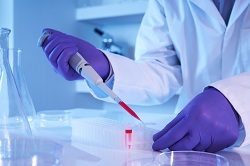Stem cell therapy for neurological disorders
Parkinson’s Disease (PD) and Huntington’s Disease (HD) are two neurological disorders that represent good candidates for cell replacement therapy. In both cases, the leading cause of disability is linked to a defined, localised degeneration of neurons. Experience gained from clinical trials using dopaminergic neuronal progenitors obtained from human foetal brain tissue provides the proof of principle that replacing damaged cells with new neurons can work in PD patients. These donor cells persist over decades in the host patient brain, release dopamine and in some cases induce long-term clinical improvement. At the same time, these results highlighted the need for readily available and renewable cells for large-scale applications. The EU-funded NEUROSTEMCELLREPAIR project worked to significantly advance stem cell therapy for PD and HD patients through new stem cell sources of dopaminergic neurons that die in PD or of striatal neurons that are lost in HD. The consortium comprised academic partners, three SMEs and one industry, bringing together world-renowned expertise in stem cells, neurobiology and bioengineering. Novel cell sources for transplantation ‘With the advent of induced pluripotent stem cell technologies and direct reprogramming of somatic cells, further sources of transplantable cells have become available,’ explains project coordinator Prof. Cattaneo. NEUROSTEMCELLREPAIR researchers also investigated the reprogramming capacity of human fibroblasts as well as of cells from neonatal human cord blood and adult peripheral blood to generate therapeutically relevant dopaminergic neurons. The identification of specific compounds, morphogens and transcription factors enabled them to achieve neuronal conversion with high efficiency and purity. The most significant achievement was the generation of authentic dopaminergic neurons from human embryonic stem (hESC) cells. Researchers successfully obtained reproducible and safe neuronal preparations that were transplanted in vivo in a PD animal model. Similar strategies were also used in the generation of striatal neurons suitable for HD treatment. Furthermore, NEUROSTEMCELLREPAIR obtained novel developmental biology insight that significantly advanced the translation of hESC-derived dopaminergic neurons in clinical trials. In the extensive in vivo work conducted by consortium members, various technologies have been employed to trace synaptic connections from grafted neurons and evaluate their long-term function in transplantation studies. Researchers observed that integrin expression was fundamental for successful functional integration of cells in the recipient brain. On another level, significant advances were made towards understanding neurodegeneration in HD patients. Researchers genotyped a large cohort of HD patients to identify new inflammation-related genetic variants that contribute to the disease process and clinical expression. These not only serve as future therapeutic targets but also help determine the host environment prior to neuronal engraftment. Next generation cell replacement strategies ‘To date, engraftment and differentiation of transplanted cells has relied on the spontaneous unfolding of developmental programmes imposed onto donor cells in vitro, but adaptation to the host milieu is not guaranteed,’ continues Prof. Cattaneo. NEUROSTEMCELLREPAIR has successfully controlled the in vivo maturation of grafted cells through the controlled expression of key molecules involved in differentiation. Significant efforts were also devoted to the scaling up of clinical grade cells suitable for use in transplantation procedures. This is a prerequisite for granting regulatory approval of the final cell derivative before therapy. Overall, through standardised reagents and highly reproducible production procedures, project partners can envision the next generation of cell replacement therapies for PD and HD. The NEUROSTEMCELLREPAIR toolbox of new cell sources, reprogramming factors and small molecules promises to advance current protocols of cell therapy and achieve enhanced tissue integration. Furthermore, validated new imaging technologies demonstrate the performance and integration of the transplanted cells. Essentially, project results have minimised the gap between development and clinical implementation of stem cell therapy in PD and HD, promoting brain repair and functional recovery in afflicted individuals. Importantly, the application of the generated platform extends beyond these two conditions for treatment of a wider spectrum of neurodegenerative disorders. ‘Consortia like NEUROSTEMCELLREPAIR were established on the idea of supranational research in a very competitive yet collaborative manner. This was made possible under the EU umbrella, further emphasising the importance of a “Union” when it comes to the fight against human diseases,’ Prof. Cattaneo concludes.
Keywords
NEUROSTEMCELLREPAIR, stem cell, neuron, Parkinson’s disease, Huntington’s disease, transplantation



